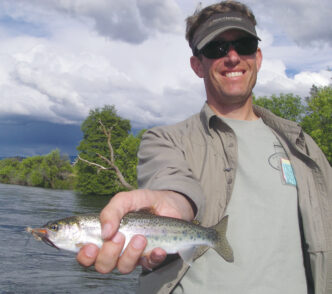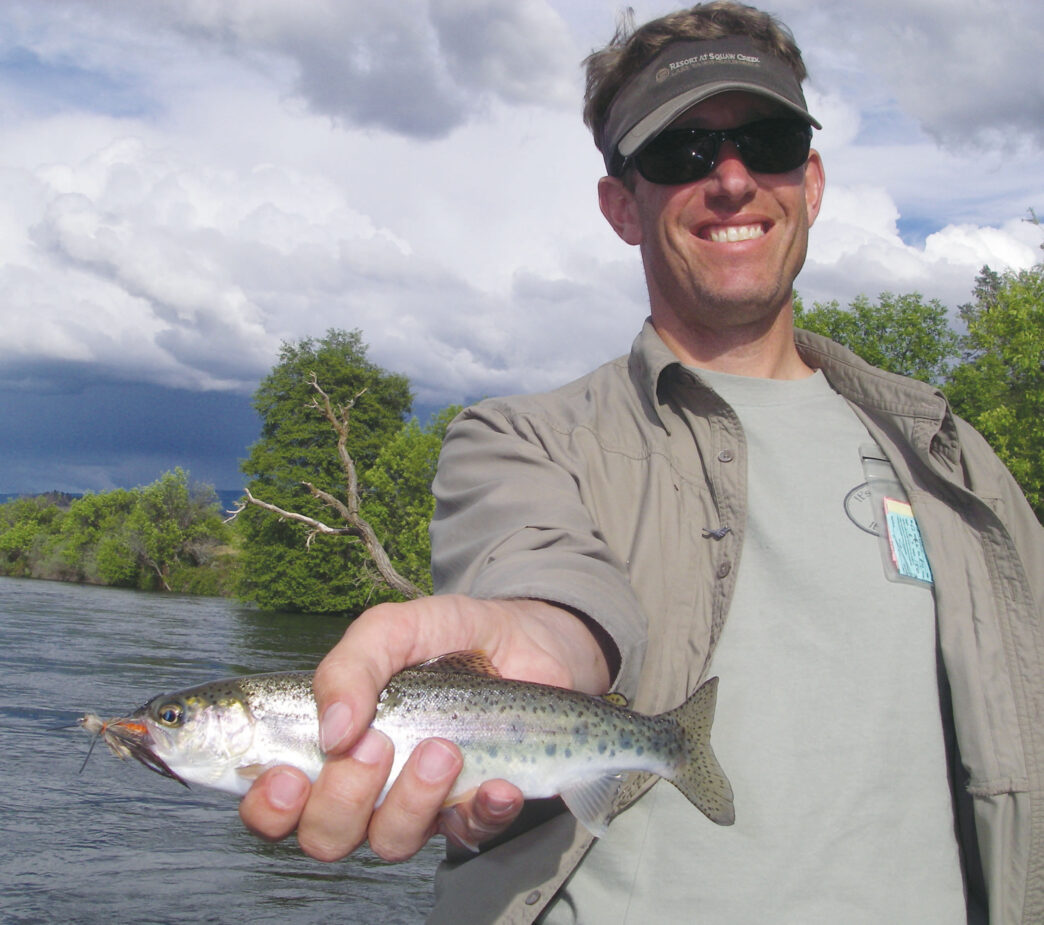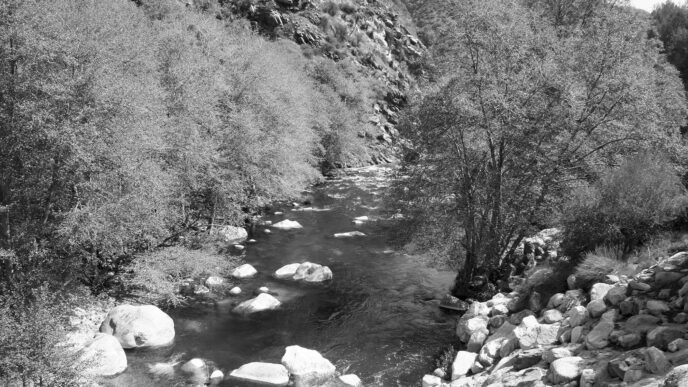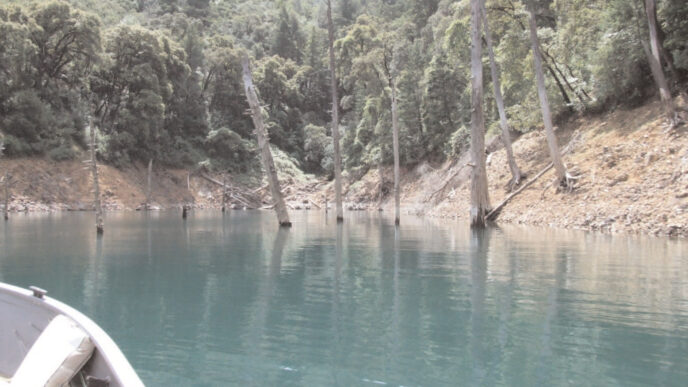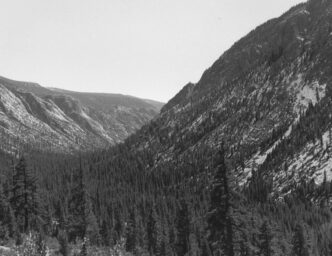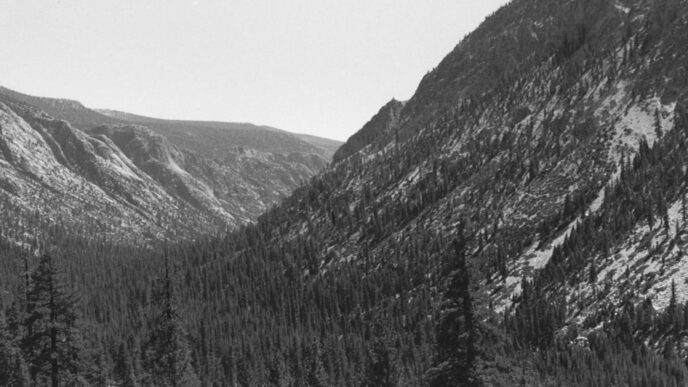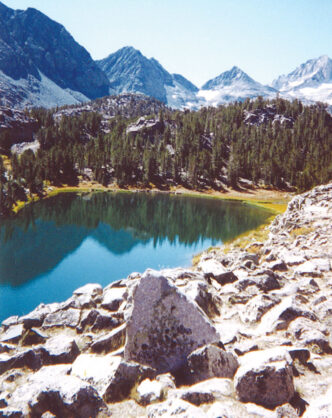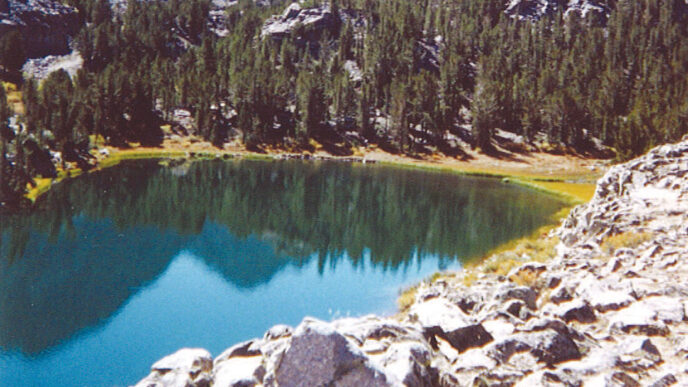“Silly good!” That is my favorite expression to describe the fishing on the Klamath when the salmonflies are out and the trout and steelhead are on them. “Bring the novices and kids” is my next refrain. In nearly 50 years of fly fishing throughout the Western states, I have yet to find a better experience for kids or first-timers. When the conditions are right, the topwater action is nonstop. Throwing big (size 4 and 6) dry flies and watching fish attack them is an absolute hoot. It can make even the most seasoned veteran feel like a kid again.
While salmonflies are one of the more consistent and predictable of hatches, arriving in the right place at the right time is never as easy as it might seem. I’ve enjoyed many epic days fishing salmonfly dries not only on the Klamath, but also on Hat Creek, the Madison, the Deschutes, and the Rogue. I’ve also had just as many or more days that were complete busts.
In the spring, when the bugs hatch, the weather and river flows can be unpredictable, with runoff and heavy rain being the most serious threats. Fortunately, the Klamath is a tailwater below Irongate Dam, so flows are more predictable than on most other rivers known for prolific salmonfly hatches. Cold weather or bright sunshine are not as detrimental, but can also hamper the bite. The ideal day is warm, overcast, and a bit windy. While a little wind can be good for the bite, too brisk a wind can make casting big dry flies a chore, rather than the joy it is meant to be.
Timing the Hatch
The other major variable to consider when trying to calculate where and when to fish the salmonfly hatch is the bug’s behavior itself. Once I understood the basic timing (the bugs hatch on the Deschutes in late May and early June, while the Madison is weeks later), the biggest error I made was that I would arrive too early. It took me much longer than it should have to figure out that I didn’t want to arrive during the peak of the hatch. I’d find bugs on bushes, in the boat, crawling up my leg, in my coffee cup — thousands of the big critters, everywhere. Unfortunately, the trout had not yet found them, at least not on the surface, where I most wanted to fish. If you are more interested in nymphing, however, then arriving during the peak of the hatch is a smart plan. The biggest fish in the river will be chasing the large morsels as they crawl toward shore to climb onto the shrubbery, pop their exoskeletons, and become winged adults preparing to mate. It can take several days or sometimes weeks before these bugs get blown into the river or venture onto the surface to lay their eggs and the fish begin looking up, so the hatch’s peak is usually not the best time for dry-fly angling.
The surface feast is most often timed closer to egg-laying activity rather than to the hatch itself, so it is the event most folks should be looking for when planning their arrival. Salmonflies are cold-blooded beasts, so cold, wet weather and high flows generally delay egg laying, while warm, dry weather and low flows hasten it. Warmer water and air temperatures increase salmonfly metabolism and activity, while cold, wet weather lessens them, and you’ll likely find the bugs hunkered down deep in streamside shrubbery, waiting for a warmer day to frolic and fly.
On any given piece of water, the main surface feast can last from a couple days to a couple weeks. Early in the hatch, topwater action will either be epic or a total bust. Later in the hatch, the fish will be literally stuffed to the gills with bugs, and while you’ll still find many willing dance partners, the fish get particular, and the grab slows. As long as a few bugs linger, however, the fish will continue to look up, and the bite can actually pick up a bit as fish search for the few remaining morsels before the hatch dies off completely. This is often the easiest time to target for first time visitors, because it is more reliable and predictable than the early stages of the hatch. Arriving later also helps avoid the risk of a bust, should you arrive too early.
The hatch generally progresses upstream, and on the upper Klamath, we’ve enjoyed great surface action down near Happy Camp in early May and a lingering hatch below Iron Gate Dam as late as the Fourth of July. Few seasons will last this long, but in most years, good fishing can be had over a period of three to six weeks. In 2009, however, my guides and I cancelled the last two weeks of our season in late June on the Klamath when the action was really turning on, because a hot spell caused water temperatures to increase into the upper 60s, which is too high to practice catch-and-release angling safely. Even though rainbow trout and steelhead might appear to swim away unharmed at these temperatures, far too many will fail to recover from their efforts and will perish.
The Fish
The word I most often use to describe the fish and fishing on the upper Klamath in the late spring and early summer, particularly during the salmonfly hatch, is a “smoltathon.” The predominant fish are steelhead smolts, both wild and hatchery. The size of the fish varies from year to year, but most fish caught will generally be 8 to 13 inches long. These fish believe they are much bigger and can put a pretty serious bend in your 5-weight. It can be hilarious to watch even smaller juvenile trout, steelhead, and salmon attack flies over and over while failing to get their little lips around your big bites.
The Klamath has bigger fish, and they can be caught. Folks are often curious if these fish are steelhead or resident rainbows. My standard answer is, “Yes. Do you really care?” By the time steelhead arrive, hundreds of miles upstream on the Klamath, it can be difficult, if not impossible, to differentiate them from resident trout unless they are fin-clipped hatchery steelhead, which are rare in the spring.
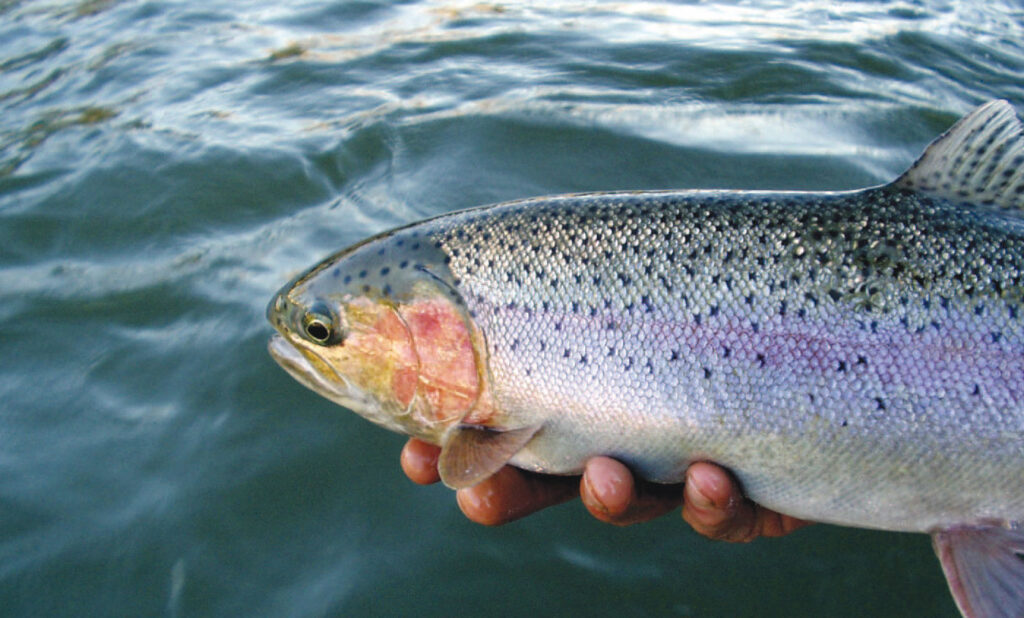
In March and April, there is often a nice run of smaller wild steelhead (16 to 23 inches) that most folks call “half-pounders” and that we target by swinging flies prior to the salmonfly hatch. It is possible, perhaps likely, that some of these chrome fish color up and stick around for the feast. Getting the smaller smolts to leave your fly alone long enough for one of these bigger fish to grab is most often the problem for those seeking to target them with dry flies.
One of these bigger fish on a dry fly and 5-weight will make most anglers’ days, while a half dozen or so might make an average angler’s season. These “trophies” make the salmonfly hatch on the upper Klamath an ideal destination to keep seasoned fly-fishing parents or grandparents engaged while their children, grandchildren, or novice friends enjoy the bounty of the smoltathon.
Rods, Rigging, and Fly Selection
Fly Fishing on the Klamath is rarely very technical. Water clarity with four feet or more of visibility is considered exceptional, so sophisticated flies and rigging are seldom required. For the salmonfly hatch, a 4-to-6-weight fast-action rod is the most common choice. A 5-weight with a floating line is the norm. Fourweights can be challenging to cast in the wind and for playing the biggest fish, but they are much more fun for the majority of fish. A 6-weight often seems a bit heavy-handed until you hook a bigger steelie, and then you wish you had brought more rod.
Casts are rarely over 30 feet, so we often overline rods by one line weight. To a floating line we add a 7-1/2-foot tapered 3X leader and chop it down even more if it is windy or if we opt to add a nymph with a 4X dropper off the bend of the dry fly. At the beginning of the hatch, when the feast first begins, fly patterns will not matter much, providing that the size, profile, and color are within reason. Many folks getting started fish flies that are too small, opting for “reasonable”-sized Orange Stimulators in size 8 or 10. Size 6 dry flies will get much more attention, while a size 4 will often get more still. These bugs are big! As the trout become satiated, and particularly if they have seen numerous flies, anglers can continue to experience hookups by reducing tippet size, dropping down one fly size, and fishing patterns not commonly used on the Klamath. When the feast begins, we’ll stick to two patterns — a Foamstone in size 4 for smooth to choppy water and a size 6 Orange Stimulator for heavy water or windy conditions to imitate the bugs fluttering on the surface. We tuck away a few patterns not available in local shops and break them out for the waning days of the hatch, perhaps adding a beadhead dropper such as a Copper John, Copper Caddis or tungsten bead nymph off the bend for fish less willing to come to the surface. This is often the stage of the hatch when we’ll discover some of the bigger fish that are still keyed in.
Techniques and Tactics
Early in the hatch, when most salmonflies are in the streamside vegetation, searching for mates, the bulk of the surface feeding by fish will be tight to the bank. In these conditions, wading anglers can move upstream along the shallows and thoroughly cover every suspecting lie as they drift flies back toward them. The more water they cover, the more fish they will find. Pounding the bank from a boat allows anglers to cover even more water and might be the most exciting method for fishing a salmonfly hatch.
Just after the bugs have hatched, but before they begin flying in mass, is when a brisk wind blowing hapless bugs into the water can make your day. Getting flies into the current under overhanging limbs in the brisk wind, however, can be frustrating. A three-quarter or even sidearm cast can help. It is usually easier to cast over the shoulder opposite from the wind direction to avoid having the fly colliding with you. When the wind is blowing toward your dominant hand, those folks who can cast effectively with their nondominant hand often have a distinct advantage. Those of us who would likely starve if required to feed ourselves with our off hand can learn to cast over our off shoulder with a crosschest cast.
In the wind, it can also help to keep casts as short as possible without spooking fish and to shorten leaders to as little as 5 or 6 feet. The additional chop on the water from the wind and the Klamath’s low water clarity reduce the risk of spooking fish and allow anglers to use very short leaders to good advantage.
As the salmonflies mature and begin to get airborne, they fall to the surface and become available to fish out in the middle of the stream. This is when longer casts allow anglers to cover more water to find fish. Having the casting ability to make slackline presentations and aerial mends, including wiggle, reach, and curved casts and shooting line can be advantageous in getting quality drifts across conflicting currents.
One of the easiest and most effective casts to learn is the bounce cast. Simply overpower the cast and have it roll out a few feet above the surface, which will cause the fly to “bounce” back toward the angler, creating slack in the best possible place — at the fly, where you most often need it to get a good drift.
About the time you figure you’ve mastered dead drifting your dry fly, you’ll find that the fish prefer them dragging or skating a bit. If you watch salmonflies carefully, you’ll often see them fluttering on the surface, sometimes even creating a wake, which attracts fish and will often be key to drawing a strike. This is particularly true late in the hatch, when the bugs and anglers have been around for a while and the fish get a bit more finicky.
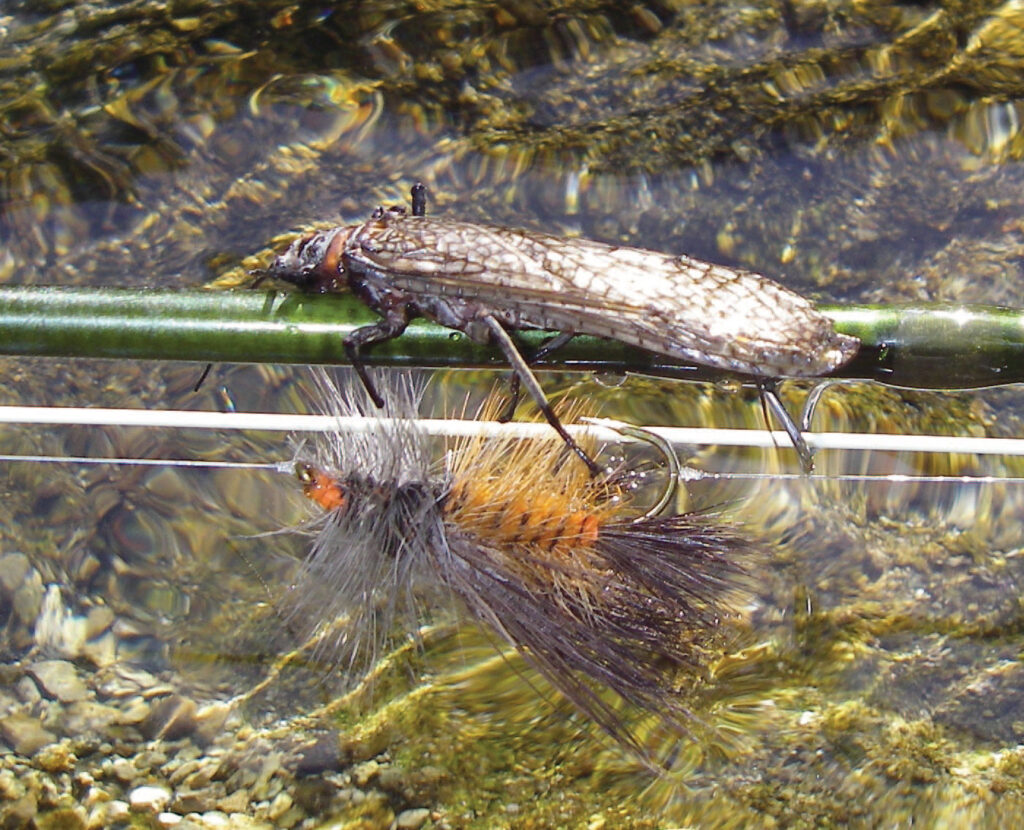
Salmonflies are very clumsy fliers, and once they hit the surface, they have great difficulty getting airborne again. The fish know this, and unless the water is moving very rapidly, fish will be relatively casual when they take. Most anglers strike a tick too early, while the fish is still tipped up, mouth open, particularly when the angler is excited by a large fish. They fail to hook the fish as a result. It is best to wait about the time it takes to say “Ah hah” to allow the fish to turn downward and close its mouth on the fly. Changing the timing of their hook sets is the most common adjustment most anglers have to make. Seasoned anglers who have honed quick hook sets mastered while nymphing can find this especially frustrating.
My usual advice is to relax and enjoy the scenery. It is springtime, the sun is shining, and there are blooms, birds, and wildlife to view in almost every direction. There is little need to take fishing very seriously. This advice has worked almost every time on the Klamath during the salmonfly hatch, because the fishing usually turns silly good, causing even the most grizzled veterans to feel like kids again.
If You Go…
There is little to be found in the way of amenities along this part of the Klamath River from its origins below Irongate Dam on down Highway 96, which follows the river downstream of the Interstate 5 bridge crossing. Most visitors base their trips out of Yreka, Ashland, or Mt Shasta. While Yreka is the closest town, it primarily features fast food and chain hotels. If you choose Ashland as a base, you’ll find lodging, dining, and entertainment options to rival any city of its size, but to reach the river, you’ll have to travel 25 miles south. The majority of local guides reside in Mt Shasta, where their guests often stay and make the drive 45 minutes north to the river. The list that follows encompasses only local businesses; there are other guides and shops that feature the upper Klamath as a destination.
Dining
Yreka. The Black Bear Diner: Features classic diner fare with fresh ingredients, friendly service, and huge portions, 1747 South Main Street, (530) 842-9324. Casa Ramos: A popular place for standard Mexican fare, along with Ramos family favorites and a full bar, 145 Montague Road, (530) 842-7172.
Ashland. See this issue’s “The Foraging Angler” column for a list of dining options in Ashland.
Mt Shasta. Trinity Café: Fine dining, superb service, and an excellent wine list, 622 North Mount Shasta Boulevard, (530) 26-6200. Vivify: Sushi and incredible Japanese cuisine in a relaxed elegant setting, 531 Chestnut Street, (530) 926-1345. The Black Bear Diner: Featuring classic diner fare with fresh ingredients, friendly service, and huge portions, 401 West Lake Street, (530) 926-4669.
Lodging
Hornbrook. Blue Heron RV Park: offers full hookups with water, sewer and 50-amp electrical, 3930 Copco Road, (530) 475-3270.
Yreka. Best Western Miner’s Inn: Conveniently located within walking distance from downtown eateries, 122 West Miner Street, (530) 842-4355. Baymont Inn and Suites: 148 Moonlit Oaks Avenue (530) 841-1300; near the Black Bear Diner.
Ashland. Plaza Inn and Suites: Within walking distance of downtown dining, shopping, and entertainment, 98 Central Avenue, (541) 488-8900. The Ashland Springs Hotel: A historic hotel in the downtown center, 212 East Main Street, (888) 795-4545.
Mt Shasta. Mount Shasta Resort: Chalets on Lake Siskiyou, 100 Siskiyou Lake Boulevard (530) 926-3030. Best Western Tree House Inn: A short walk to town, 111 Morgan Way, (530) 926-3101.
Fly Shops
The Ashland Fly Shop, 399 East Main Street, Ashland, OR, (541) 488-6454; The Ted Fay Fly Shop, 5732 Dunsmuir Avenue, Dunsmuir, CA, (530) 235-2969; The Fly Shop, 4140 Churn Creek Road, Redding, CA, (530) 222-3555.
Guiding
Shasta Trout, Craig Nielsen, craig@shastatrout.com, (530) 926-5763; Three Rivers Guide Service, Alan Blankenship, alan@threeriversguideservice.com, (530) 925-7990; Andras Outfitters, Jim Andras, andrasoutfitters@me.com, (530) 7227992; Wild Waters Flyfishing, John Rickard, john@wildwatersflyfishing.com, (530) 926-3810; Mount Shasta Anglers, Chuck Volckhausen, chuck@mtshastaanglers.com, (530) 859-3474.
Shuttle Services
Sheri’s Shuttles, (530), 475-0931; Blue Heron RV Park, (530) 475-3270.
Craig Nielsen



